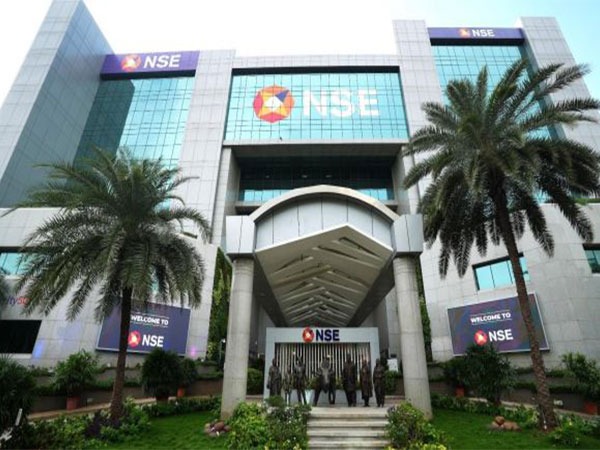Introduction: A Surge in Investor Participation Despite Economic Challenges
The Indian stock market has witnessed a significant surge in retail investor participation, despite a period of moderation in recent months. According to the National Stock Exchange (NSE)‘s report for FY26, the number of new investors entering the market reached a remarkable 2.1 crore, marking a significant milestone in the growth of retail participation in India’s capital markets.
This influx of new investors highlights the ongoing resilience of the Indian stock market even in the face of economic uncertainty, global market volatility, and domestic challenges. It also reflects the growing interest of Indian households in wealth creation through equity investments, which has gained significant traction in recent years.
The Growing Investor Base: A Key Trend in FY26
The NSE report shows that, even with moderation in the pace of new accounts being opened in the second half of the fiscal year, India saw an impressive addition of 2.1 crore new investors to the market in FY26. This number indicates that retail investor participation continues to grow at a steady pace, building on the momentum seen in previous years.
Retail participation has been a major driver of the market’s expansion over the past several years. The increasing number of investors coming into the market can be attributed to several factors, including greater financial literacy, increased ease of access to trading platforms, and a growing middle-class population looking for investment opportunities beyond traditional savings instruments.
The report highlights that democratization of financial services, coupled with growing awareness of the benefits of equity investment, has played a key role in attracting new investors. Platforms like Zerodha, Upstox, and other fintech startups have made it easier for individuals to access stock markets, reducing barriers that once deterred many from investing.
Factors Behind the Growth of New Investors
1. Technological Advancements:
The digitization of the trading process has been a game-changer in expanding market access. With the advent of mobile apps, online trading platforms, and instant KYC processes, investors can now open trading accounts and start investing in a matter of hours. The ease of use and the ability to trade at their convenience has made stock markets more attractive to young and tech-savvy investors, particularly during the pandemic when physical market participation was restricted.
2. Financial Literacy Initiatives:
In recent years, there has been a concerted effort by financial institutions, brokerage firms, and even the government to improve financial literacy. This has played a crucial role in demystifying the stock market for a broader audience, encouraging first-time investors to consider equities as a legitimate avenue for wealth creation.
Programs and educational resources provided by platforms like Moneycontrol, ETMarkets, and various YouTube channels focused on investing, have further educated the masses about the potential benefits and risks of stock market participation.
3. Rising Disposable Incomes:
India’s growing middle class, particularly among millennials and Gen Z, has been a major force driving the stock market boom. With increased disposable incomes, young investors are looking for ways to grow their wealth beyond traditional savings accounts and real estate. The stock market, with its potential for higher returns, has become a preferred choice for many.
4. Government and Regulatory Support:
The Indian government, along with the Securities and Exchange Board of India (SEBI), has introduced several reforms over the years aimed at improving market transparency and safeguarding investor interests. These measures have boosted investor confidence, making the market more appealing to the retail investor segment.
Moderation in Recent Months: A Cause for Concern?
While the report highlights the overall growth in retail investor participation, it also acknowledges a moderation in the pace of growth in the second half of FY26. Several factors have contributed to this moderation:
1. Global Economic Volatility:
Global economic uncertainty, including factors like interest rate hikes in major economies, recessionary fears, and geopolitical tensions (such as the Russia-Ukraine war), have contributed to volatility in global markets. This uncertainty has impacted investor sentiment, leading to cautious behavior among new and existing investors.
2. Domestic Market Challenges:
On the domestic front, inflationary pressures, rising commodity prices, and concerns over the health of the banking sector have also led to some market slowdown. These factors have made investors more wary, leading to reduced activity in certain segments of the stock market.
3. Correction in Stock Valuations:
After a strong bull run in the past few years, stock valuations in India were seen as relatively overheated in some sectors. The correction in stock prices, especially in the technology and financial sectors, has made some new investors cautious about entering the market at higher price levels.
Despite this, experts argue that the moderation is a natural part of market cycles and does not diminish the long-term potential of the Indian stock market. Many analysts believe that market consolidation may present new opportunities for investors who are willing to take a long-term approach.
The Future Outlook: Will Retail Participation Continue to Grow?
Looking ahead, experts are optimistic that retail investor participation will continue to grow in the coming years, despite the challenges faced in FY26. Several key factors are likely to drive this growth:
1. India’s Economic Growth:
India remains one of the world’s fastest-growing major economies. As the country continues to attract foreign direct investment (FDI) and expands its digital infrastructure, retail investors are expected to see growing opportunities in both the equity and debt markets. The Make in India and Atmanirbhar Bharat initiatives are likely to spur investment in sectors such as manufacturing, technology, and infrastructure, further enticing retail investors.
2. Evolving Market Reforms:
The Indian government and SEBI have continued to introduce investor-friendly reforms aimed at enhancing market efficiency and security. Initiatives like reduced brokerage fees, simplified tax regulations, and greater transparency will help in retaining and attracting new investors in the future.
3. Younger Generation of Investors:
As millennials and Gen Z continue to enter the workforce and accumulate wealth, they are expected to increasingly turn to the stock market as a vehicle for long-term wealth creation. This demographic is more comfortable with digital platforms and is highly engaged with social media, making them a key target audience for financial services companies.
4. Financial Products and Services Innovation:
The financial industry is likely to continue innovating with new investment products, such as exchange-traded funds (ETFs), digital gold, and REITs, which can attract a broader range of investors. Additionally, robo-advisory services and AI-powered portfolio management platforms are likely to make it easier for retail investors to manage their investments.
Conclusion: A Promising Future for India’s Retail Investors
The NSE’s report for FY26 reflects the resilience of India’s retail investor base, even amidst market moderation. While the pace of growth slowed in the latter half of the fiscal year, the overall addition of 2.1 crore new investors to the market indicates that retail participation is here to stay.
As technological advancements, financial literacy, and a growing middle class continue to drive the market’s expansion, India is poised to see even greater participation in its capital markets in the years to come.
With a young, tech-savvy population eager to grow their wealth, and a government committed to improving market infrastructure, the future looks bright for retail investors in India.





